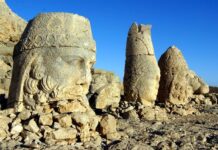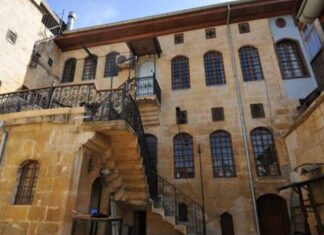Routes to Delphi
Traveling to Delphi in ancient times was not an easy task. From Thebes, one could go westward on a difficult journey that required several days on horseback. The road was rough and uncomfortable. A simpler way, however, was to travel from Corinth by boat. Twice a week, boats sailed to a small town called Itea, on the Gulf of Corinth. From Itea, travelers could reach Delphi after a two-and-a-half-hour ride Demosthenes Life and Death.
Scenery and Atmosphere
The road to Delphi offered magnificent views of Mount Parnassus and its surrounding cliffs. Even today, visitors feel a sense of mystery in the mountain gorges. In ancient times, this atmosphere must have deeply impressed the imagination of the Greeks. The site itself seemed perfectly chosen for a place of prophecy and divine presence.
The Oracle of Apollo
Power and Influence
Delphi was famous for its oracle, the seat of the god Apollo’s voice on earth. Both private citizens and entire city-states consulted the oracle before making important decisions. Despite the oracle’s answers often being vague or ambiguous, its influence remained strong for centuries.
How the Oracle Worked
The voice of the oracle was believed to rise from a deep chasm in the rocks. Today, this chasm can no longer be identified, likely due to earthquakes that changed the ground. Above the opening sat the Pythia, a priestess known as the prophetic virgin. She sat on a golden tripod, inhaled sacred vapors, and spoke mysterious words. Priests then interpreted her sayings and delivered them to the people Guided Turkey Tours .
Respect and Legacy
The oracle’s reputation spread throughout Greece. Great thinkers and writers such as Solon the lawgiver, Plato the philosopher, and poets like Aeschylus, Pindar, and Sophocles spoke of Delphi with admiration and respect. Although some critics believed the priests controlled the oracle for political reasons, most people considered its influence beneficial and guiding.
Modern Delphi
Excavations and Discoveries
Today, Delphi is known as Castri, a small town built on part of the ancient site. It lies 2,130 feet above the Gulf of Corinth, surrounded by the cliffs of Mount Parnassus. The French School of Archaeology has carried out extensive excavations there, uncovering many temples, statues, and treasures that reveal the glory of ancient Delphi. These discoveries have made Delphi one of the most important archaeological sites in Greece.
Climbing Mount Parnassus
Mount Parnassus, which rises to 8,070 feet, is closely linked with both history and mythology. From Delphi, travelers can climb the mountain, much of the way on horseback. The journey is filled with legends of gods, poets, and heroes. For the ancient Greeks, Parnassus was sacred to Apollo and the Muses, making it a symbol of both wisdom and inspiration.
Thermopylae and Heroism
The Famous Battle
Not far from Delphi lies one of the most legendary sites in Greek history: Thermopylae. In 480 B.C., King Leonidas of Sparta and his 300 warriors made a heroic stand against the vast Persian army. They held the narrow pass for days, sacrificing their lives in defense of Greece.
The Journey There
Thermopylae is about thirty miles north of Delphi in a straight line, but the rugged terrain makes the actual journey much longer—nearly three times the distance. There are still no direct roads through the mountains, and in earlier times the trip required several days on horseback.








